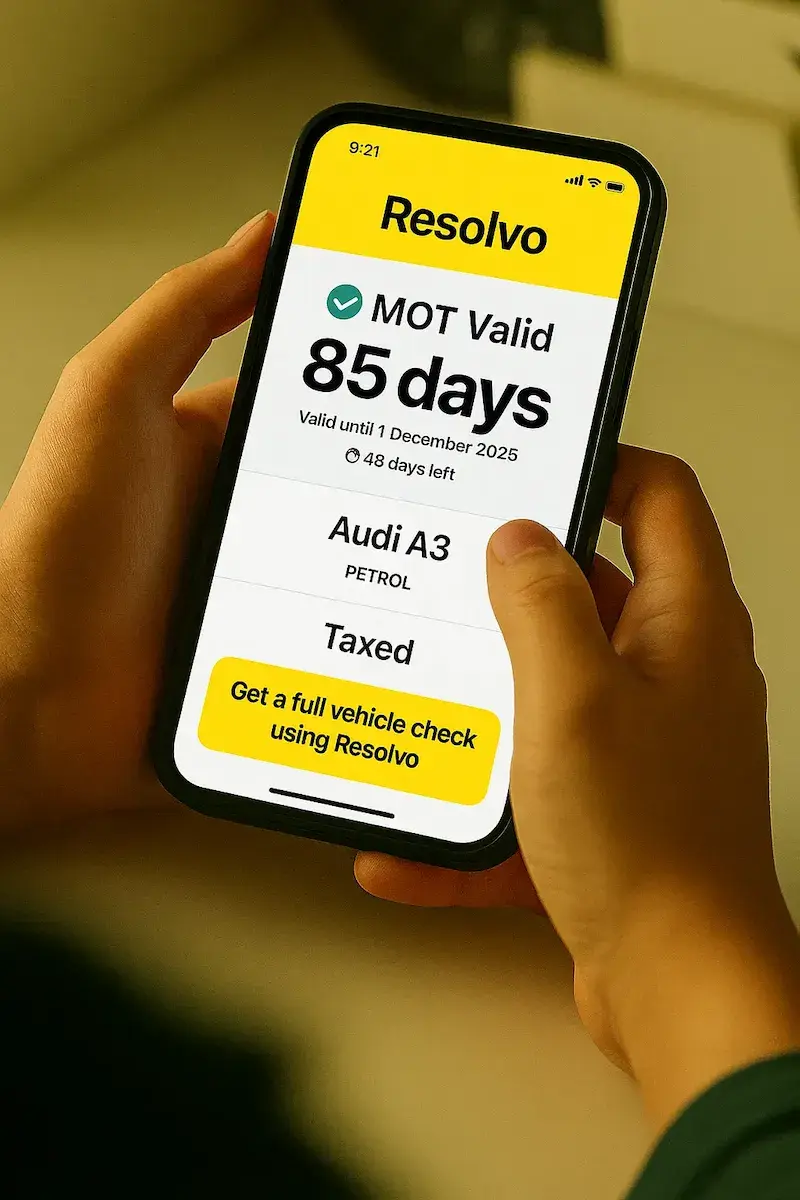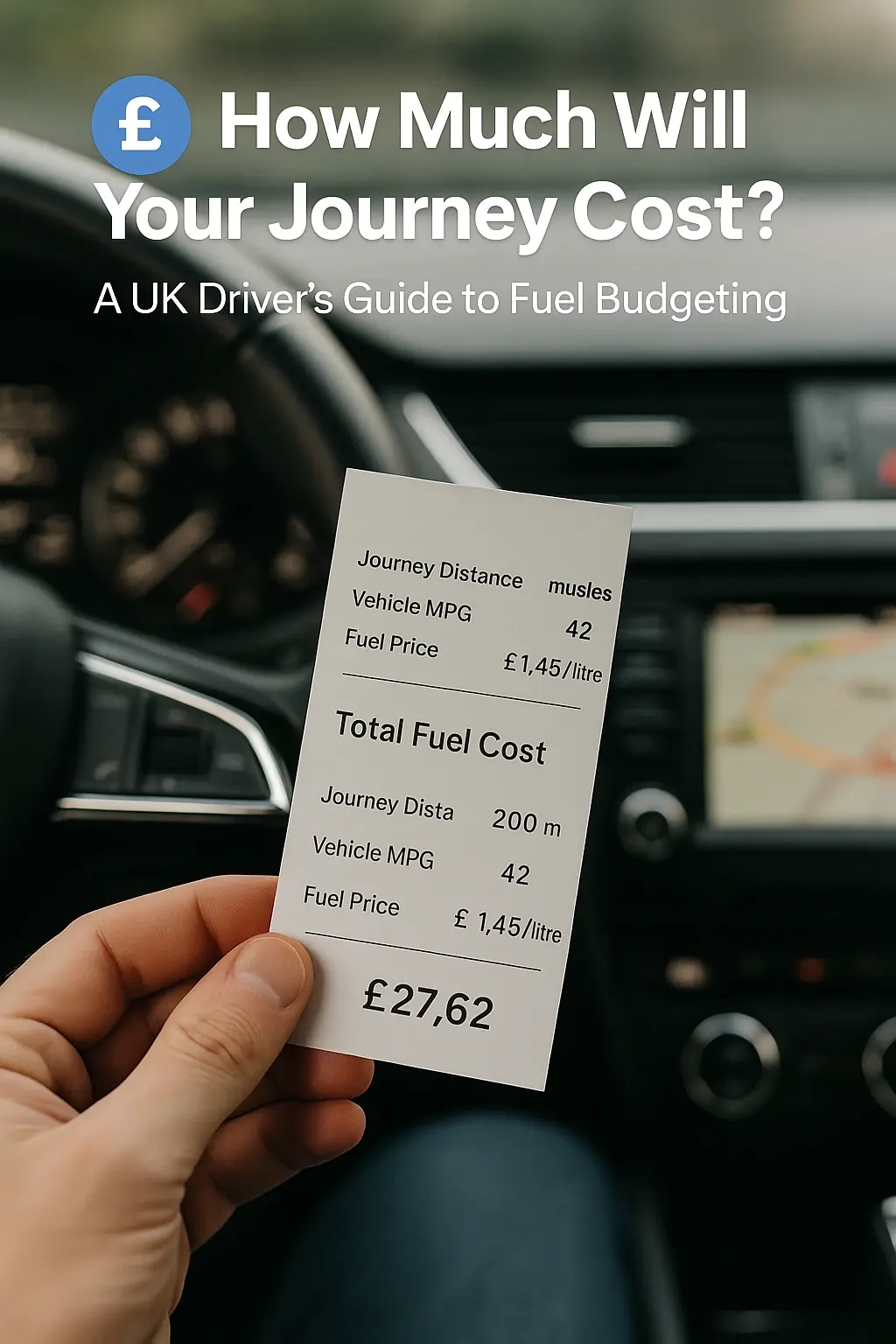If you've ever looked at your car details and seen something like “122 g/km” next to CO₂ emissions, you’re not alone in wondering what it means.
That small number actually affects your road tax, your car’s cost, and even whether you can drive in certain areas like London’s ULEZ.
Let’s break it down — simply.
Check Your Car CO₂ Emissions in seconds
🧪 What Does “CO₂ Emissions (g/km)” Mean?
CO₂ (carbon dioxide) is the main greenhouse gas released when your car burns petrol or diesel. The more fuel your car burns, the more CO₂ it releases.
So, CO₂ emissions are shown in grams per kilometre (g/km) — meaning how many grams of CO₂ your car produces for every kilometre driven.
A smaller number = a cleaner, more efficient car.
⚙️ How Are Vehicle Emissions Calculated?
Every new car in the UK has its CO₂ emissions tested before it’s sold. These tests take place in a lab on a rolling road, not on a public street. Here’s how it works:
🧾 Step 1: The Test Cycle
Cars are “driven” on a rolling road under different simulated conditions — speeding up, slowing down, idling, and cruising — to copy what real driving looks like. This test is called the Worldwide Harmonised Light Vehicle Test Procedure (WLTP). Older cars were tested using the NEDC method, which was simpler and gave unrealistically low results.
⛽ Step 2: Measuring the Fuel Burn
While the test runs, sensors track exactly how much fuel is used. The more fuel burned, the more CO₂ is created — because carbon in the fuel combines with oxygen in the air to form carbon dioxide.
📊 Step 3: The Formula
In simple terms:
CO₂ emissions (g/km) = Fuel used per km × CO₂ in that fuel
For example: If a petrol car burns about 0.06 litres of fuel per km, and petrol releases roughly 2,390 grams of CO₂ per litre, then 0.06 × 2,390 = 143 g/km of CO₂.
That’s the figure recorded and sent to the DVLA for your vehicle.
🚗 Step 4: Real‑World Adjustments
Because everyone drives differently — faster, slower, with passengers, in cold or hot weather — the WLTP test also includes corrections to make the result closer to real life. This makes today’s CO₂ ratings more accurate than ever.
🧩 Why It Matters
A car that burns less fuel produces less CO₂. That means lower emissions, cheaper running costs, and often lower tax.
🌫 Why CO₂ Emissions Matter for Drivers
CO₂ emissions affect far more than the environment:
💸 1. Your Road Tax Band
The UK uses your car’s CO₂ rating to decide how much Vehicle Excise Duty (VED) you pay each year. Higher CO₂ = higher tax.
🏙 2. ULEZ & Clean Air Zones
Many cities now charge or ban higher‑polluting cars. Knowing your CO₂ rating helps you check if you’ll be charged.
🚘 3. Resale Value
Low‑emission cars usually sell faster and hold value better. High‑emission vehicles can be more expensive to keep and harder to sell.
🌍 4. Environmental Impact
Cutting emissions helps reduce climate change and air pollution. Every lower‑emission car on the road makes a difference.
🧠 Common Questions
Is 0 g/km always best? Yes — fully electric cars have no tailpipe emissions. But remember, they still have an energy footprint from charging.
Does my CO₂ number ever change? No — it’s fixed when your car is first tested and recorded by the DVLA.
How can I check mine? Use the Resolvo CO₂ Emissions Checker — it’s instant, free and shows your exact emissions, tax band and fuel details.
Final Thoughts
Your car’s CO₂ number might look small, but it tells you a lot — from how much tax you’ll pay to whether you can enter certain cities.
Use Resolvo’s free CO₂ Emissions Check to see your vehicle’s rating, understand your tax band, and make smarter choices when buying or driving.
And if you ever get a parking fine, Resolvo helps you fight it too — free, fast, and stress‑free.
Related Posts
Fuel Cost Calculator: Miles Per Gallon to Litres
10 November 2025
Confused by MPG when buying fuel in litres? Learn why MPL makes fuel cost calculations easier. Free MPG to MPL converter + real examples for UK drivers. (158 chars)

MOT Guide: Check Your MOT, Avoid £1,000 Fines + Invalid Insurance
10 November 2025
Check if your MOT is valid before you get fined. Free MOT checker shows expiry, full test history & advisories. Takes 10 seconds, could save you thousands

Find Out How Much Your Journey Will Cost?
10 November 2025
Calculate your UK journey costs accurately — fuel, parking, tolls & hidden expenses. Free calculator + real examples. Is driving cheaper than the train?